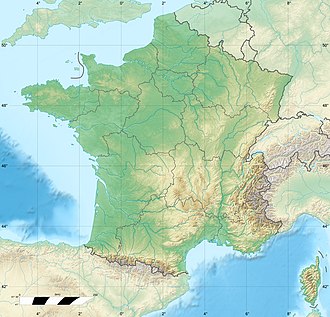| Vanoise National Park | |
|---|---|
| Parc national de la Vanoise | |
 Grande Casse (3855 m), highest summit of Vanoise | |
| Location | Savoie, France |
| Nearest city | Modane Bourg-Saint-Maurice |
| Coordinates | 45°20′N6°50′E / 45.333°N 6.833°E |
| Area | 534 km2 (206 sq mi) |
| Established | 6 July 1963 |
| Governing body | Parcs nationaux de France |
Vanoise National Park (French : Parc national de la Vanoise) is a French national park between the Tarentaise and Maurienne valleys in the French Alps, containing the Vanoise massif. It was created in 1963 as the first national park in France.
Contents
Vanoise National Park is in the département of Savoie. Small villages like Champagny-le-Haut, Termignon, La Chiserette, Bramans, Sollières-Sardières, Friburge, Pralognan-la-Vanoise and Séez, lie near the park. The park is bordered by several large French ski resorts (Les Trois Vallées, Tignes, Val-d'Isère, Les Arcs, La Plagne). L'Ecot, a traditional hamlet of Bonneval-sur-Arc located inside the protected area, is also part of the park. [1]
On the Italian side of the border, the park is continued by Gran Paradiso National Park. Together, these two parks cover over 1250 km2, making the area the largest alpine national park.




